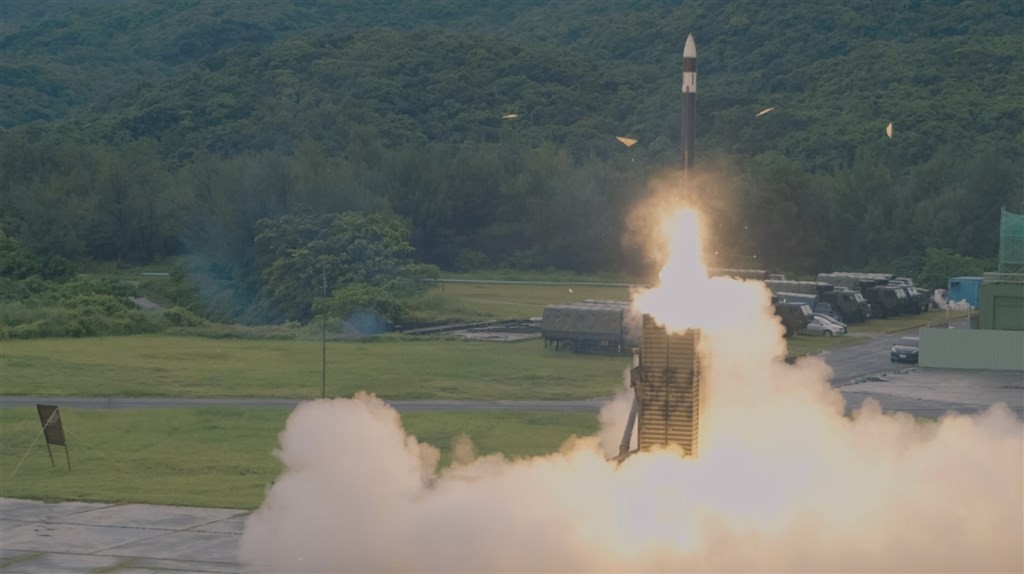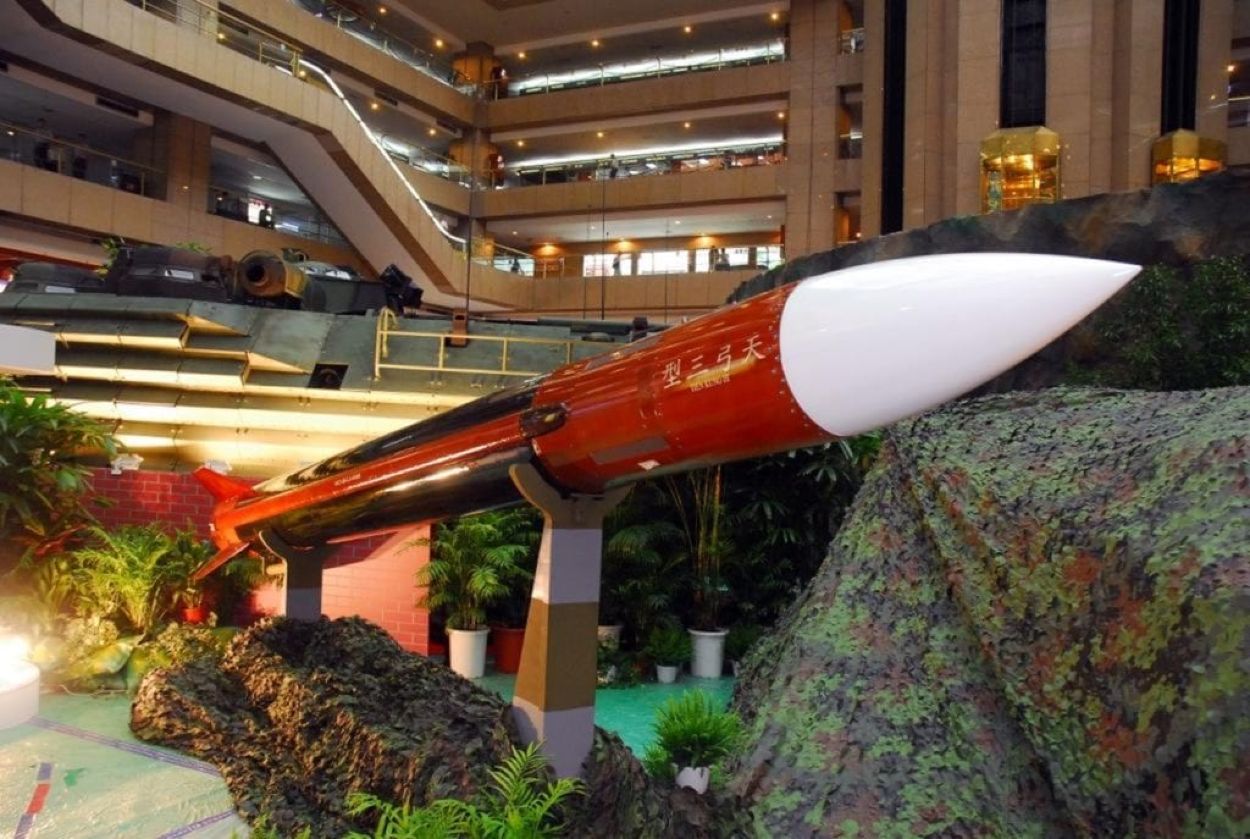As intrusions into its Air Defense Identification Zone (ADIZ) by Chinese warplanes become more frequent, the Taiwanese Ministry of National Defense (MND) plans to deploy its locally-produced Sky Bow-III missiles at 12 new bases.
In a report, Liberty Times said the strategy was driven by the need to confront China’s threat and bolster the country’s large-scale production of missiles. The idea is reportedly to provide the new bases with information about Chinese missiles using a long-range early warning radar system.
As per the documents submitted by the Ministry of National Defense to the Taiwanese legislature Yuan, the existing Sky Bow II and MIM-23 Hawk missiles were expected to be upgraded to Sky Bow III capabilities. Besides that, the MND reportedly planned to build six military bases between 2022 and 2025.
A second phase of six more bases was planned from 2023 to 2026. All these bases were intended to be equipped with the most advanced air defense missiles in the Taiwanese arsenal, the Sky Bow III, produced indigenously by the National Chung-Shan Institute of Science and Technology (NCSIST).
Although not independently confirmed, the revelation comes when the PLA Air Force has ratcheted up tensions by increasing the frequency of the maneuvers in its air defense zone. For instance, the MND announced on October 19 that it had detected 13 Chinese air force planes entering Taiwan’s air defense zone, including fighter jets and drones, accompanying Chinese warships carrying out “combat patrols” and drills.
Last month, a record number of Chinese fighter planes – 103 precisely – flew around Taiwan in just one day, triggering an alarm in the self-ruled island state. The MND responded, “The continuous military harassment by the Communist military can easily lead to a sharp increase in tensions and worsen regional security.” However, these repeated warnings by Taiwan have had nothing on a belligerent China.

The country considers Taiwan a rogue Chinese province that has vowed to unite with the Chinese mainland someday, using force if necessary. With these repeated vows, bellicose rhetoric, and China’s burgeoning military activity around the island, Taipei has focused on strengthening its offensive and defense capabilities in line with its asymmetric warfare against China.
The island state has been accruing advanced air defense capabilities to counter the threat of China’s cutting-edge missiles and UAVs. This is where the Sky Bow-III comes into the picture, despite the Taiwanese military also likely to secure the US-made Patriot missile defense system as articulated by Washington late last year.
Taiwan’s Sky Bow III Protecting Against Aerial Threats
The Sky Bow III is designed to take on medium- and long-range aerial threats, including cruise missiles, short-range tactical ballistic missiles, fighter aircraft, and anti-radiation missiles. It can function independently or in groupings, engaging numerous targets at once.
The Sky Bow III or Tien Kung III (TK-III) is part of the Tien Kung/Sky Bow series of surface-to-air missiles. The weapon conducted test firings in 2008 after its initial test flight in 2001. The Taiwan Military began operating test and evaluation (OT&E) in 2009 to evaluate the performance, effectiveness, and suitability aspects of the TK-III. OT&E was completed in 2011.
Throughout testing, the missile could intercept tactical ballistic missiles with a single-shot kill probability and air-breathing targets. It also performed simultaneous engagements with multiple airborne targets.
The TK-III and the US-origin Patriot would be the mainstay of Taiwanese air defense against the People’s Liberation Army Air Force (PLAAF) and People’s Liberation Army Navy (PLAN) aviation.
The TK-III comprises surface-to-air missile, canister, and mobile fire control units, including phased array radar, communication relay, engagement control station, launcher, and power plant equipment. It has an active radar guidance system combined with inertial midcourse guidance. A microwave seeker in the nose provides high-accuracy navigation information.
The surface-to-air missile is propelled vertically and has four tail fins. The missile may destroy targets with a high single-shot chance of death thanks to a directional warhead that contains high-energy fragmentation.

The ECS can fire sequence control, target identification, weapon assignment, and kill & threat assessment. It protects areas with chemical and biological hazards. Thanks to the communication relay capability, wireless networks or fiber optics can be used for communication.
It was reported in April this year that the Taiwanese Air Force had concluded testing an advanced version of the Sky Bow III missile, paving the way for its mass production. NCSIST has developed two advanced types of the Sky Bow III — one can intercept targets at an altitude of 70 kilometers and has been successfully tested. At the same time, the other can soar up to 100 kilometers and is still undergoing testing.
Meanwhile, the US has offered to sell up to 100 of its PAC-3 Missile Segment Enhancement (MSE) variant and related equipment to Taiwan. The advanced Patriot missiles will augment Taiwan’s existing stockpile “to improve its missile defense capability, defend its territorial integrity, and deter threats to regional stability,” the notice said.
With the lingering threat of a potential Chinese invasion, Taiwan has buckled up on the essentials, including defending itself against a much superior force. Deploying advanced air defense systems that prevent the enemy from establishing air superiority becomes a priority. If confirmed, the deployment of Sky Bow III at upcoming bases is likely a step in that direction.
- Contact the author at sakshi.tiwari9555 (at) gmail.com
- Follow EurAsian Times on Google News




